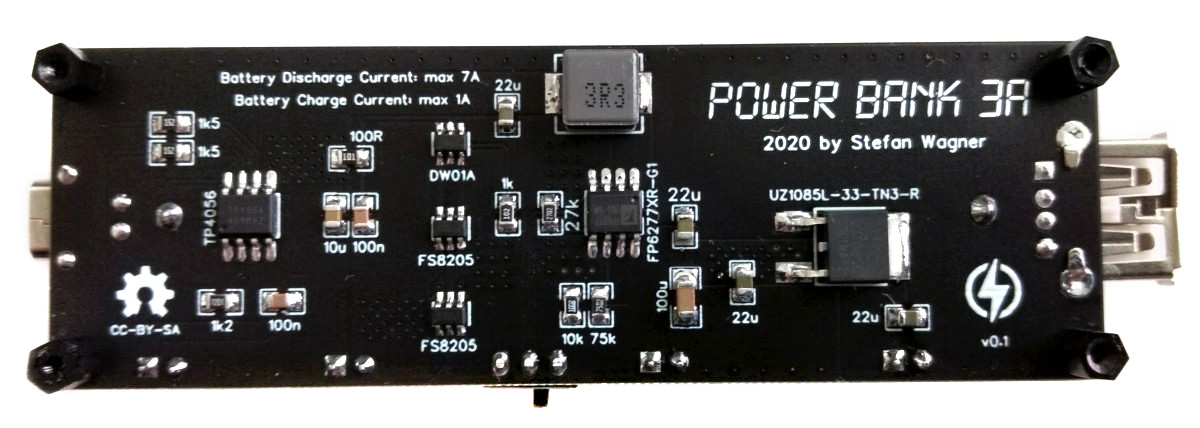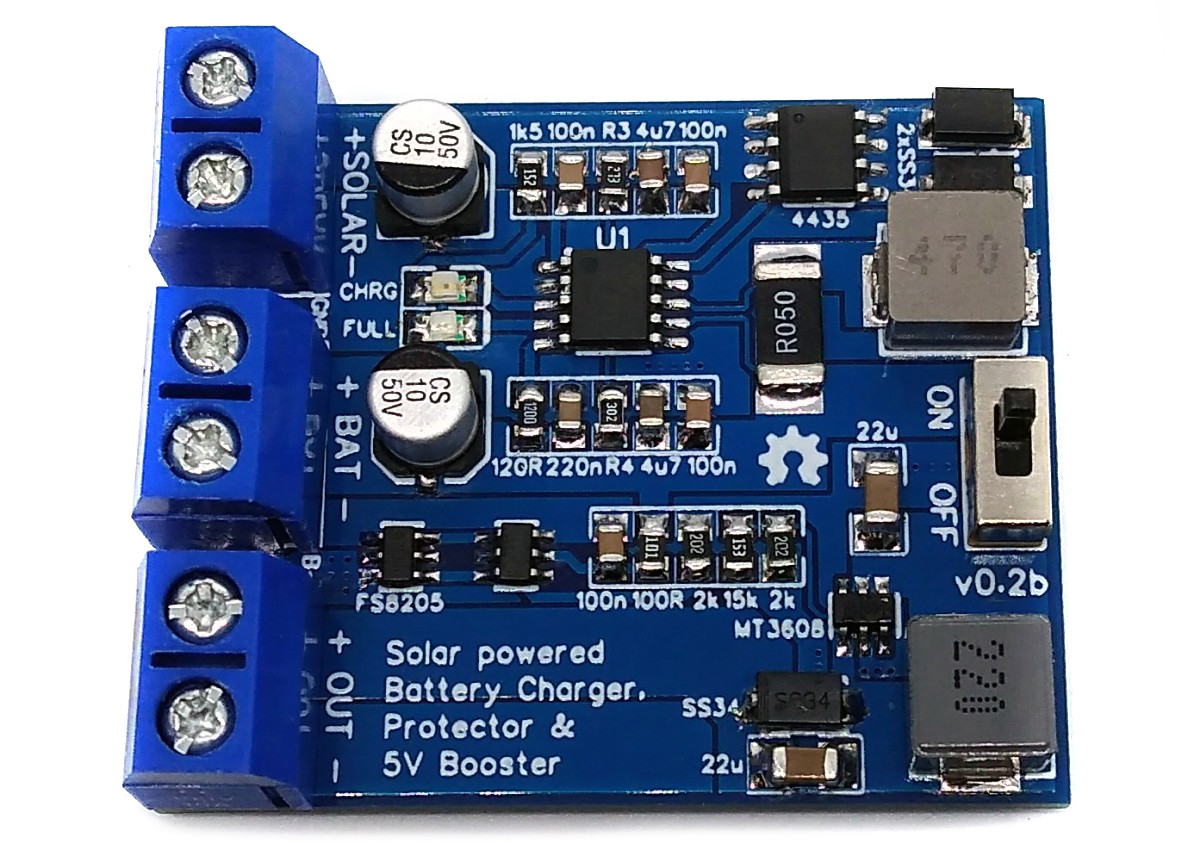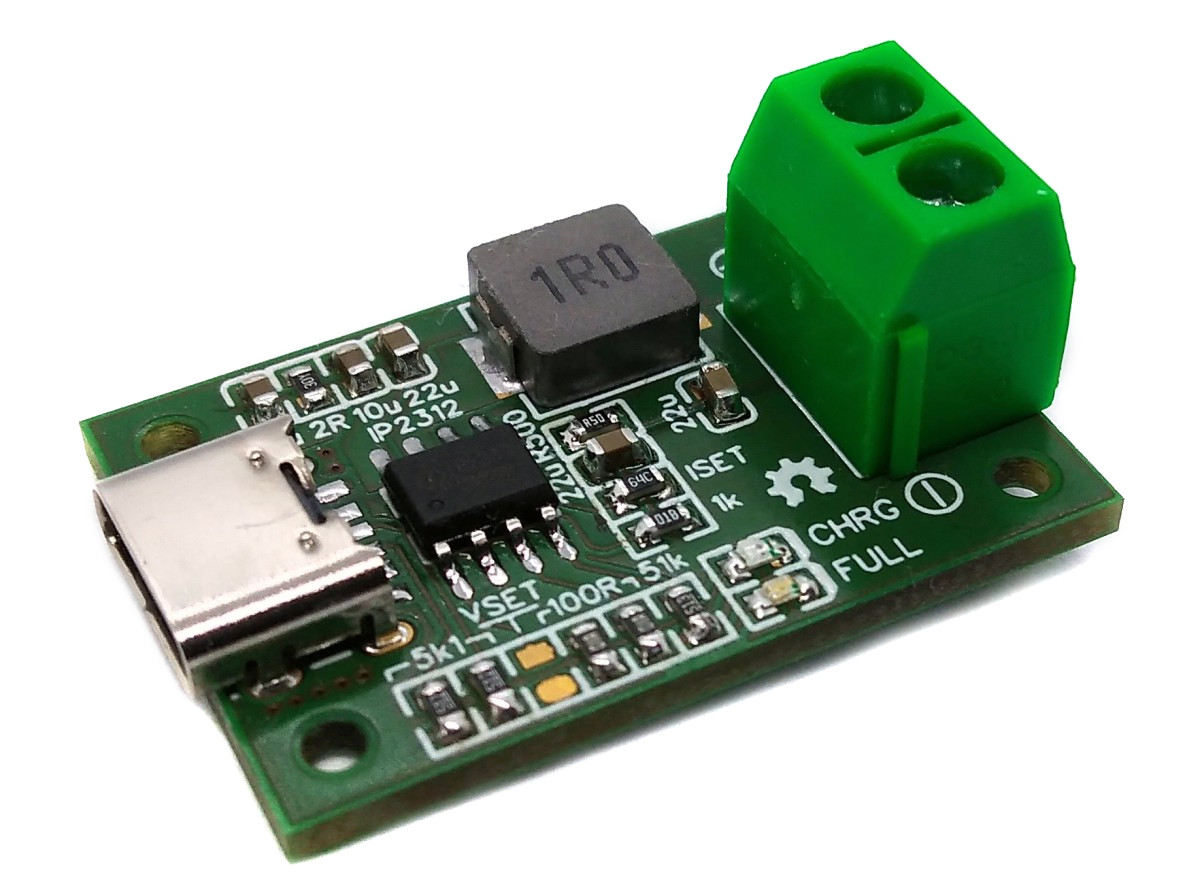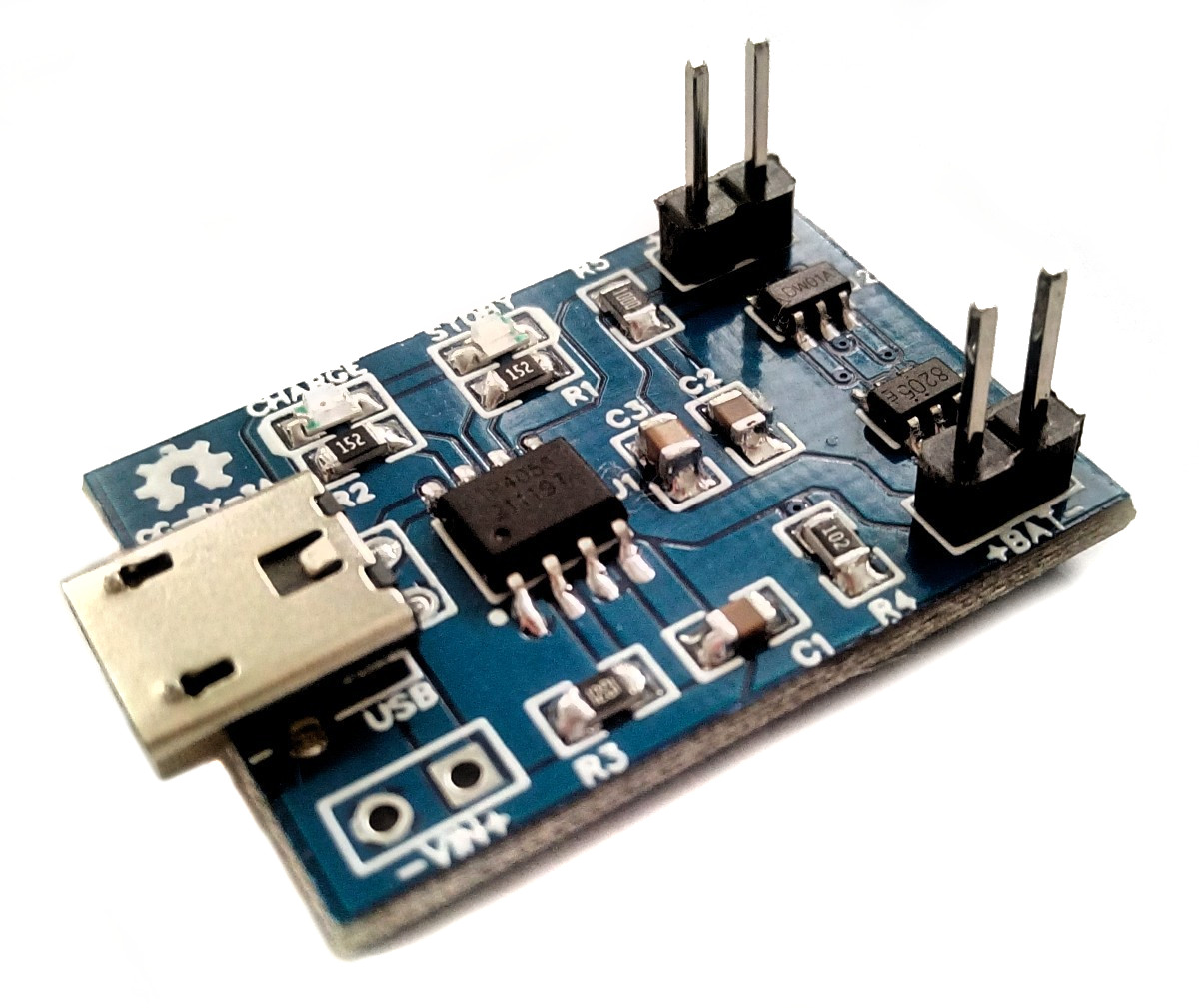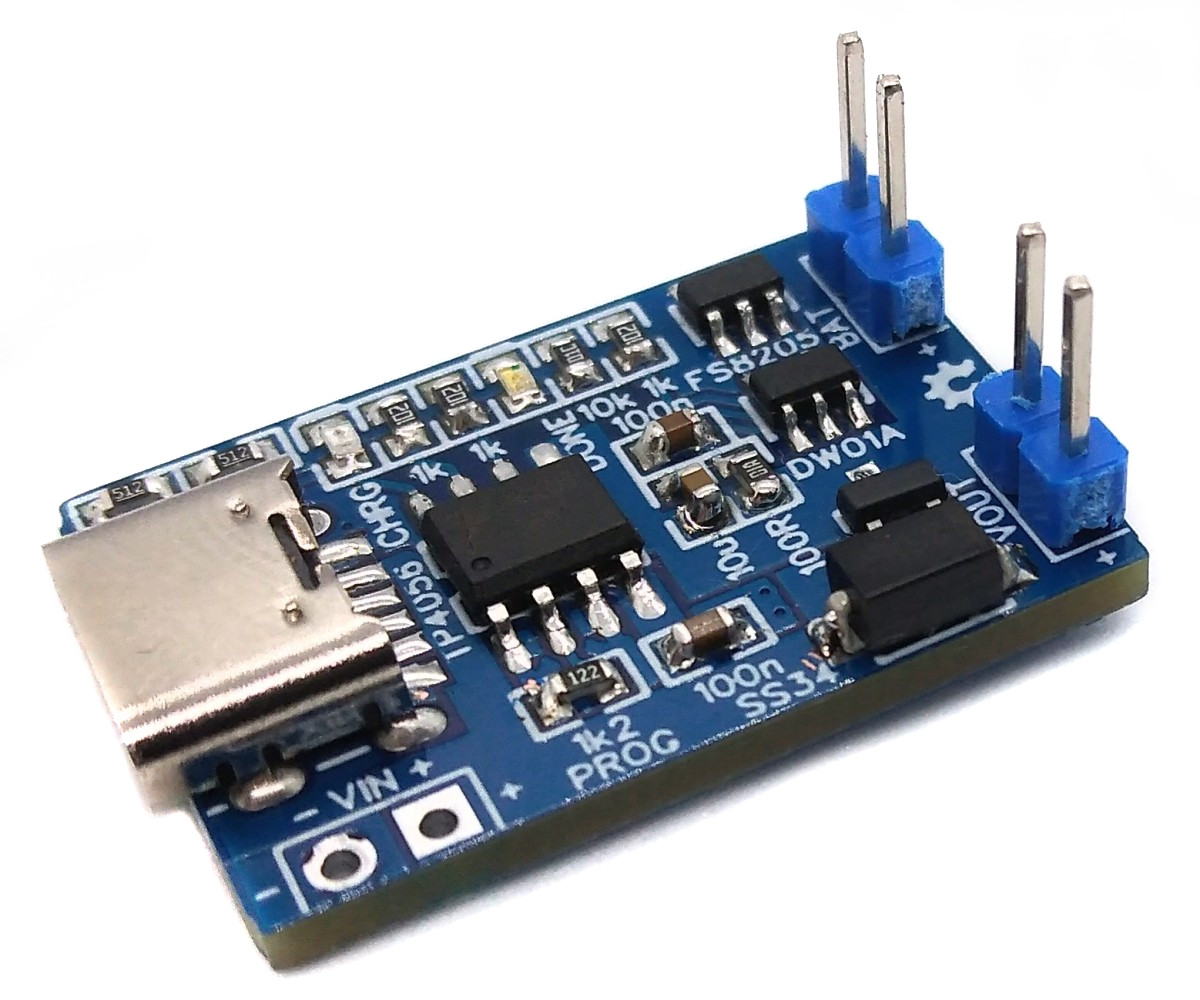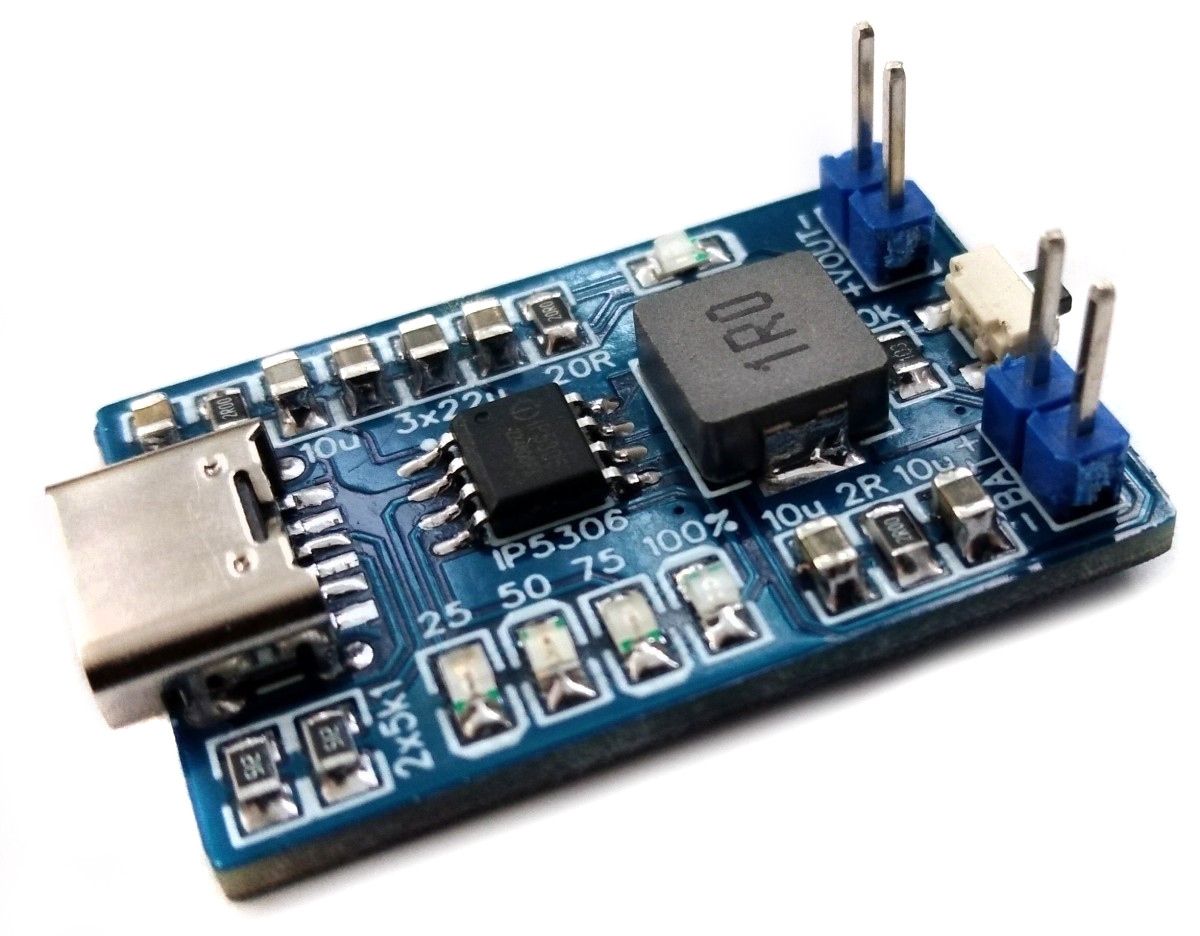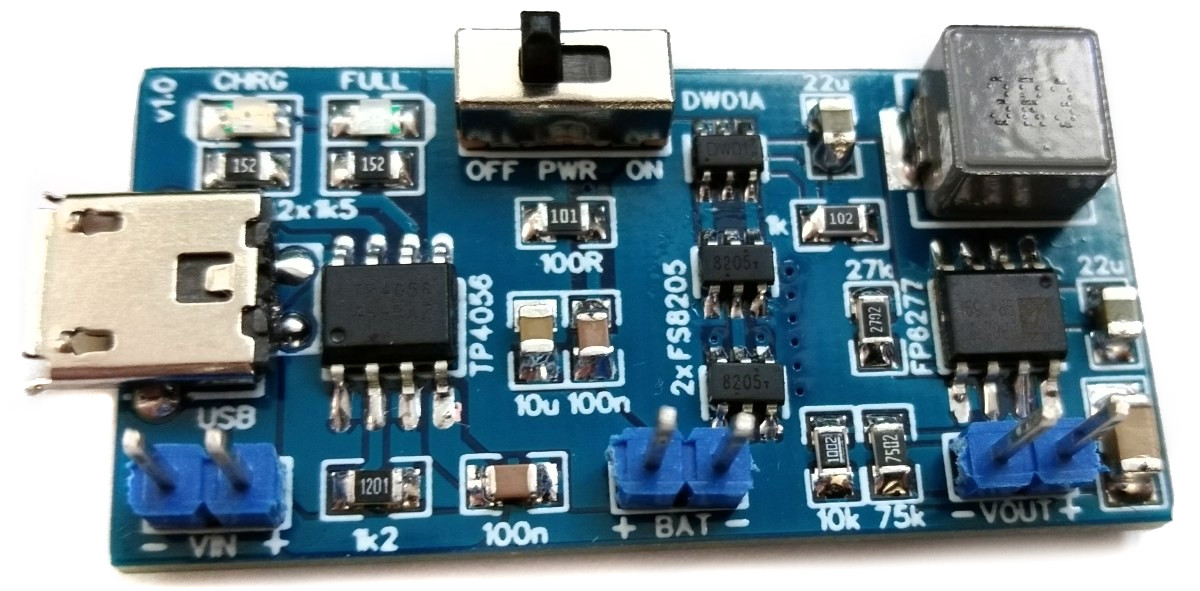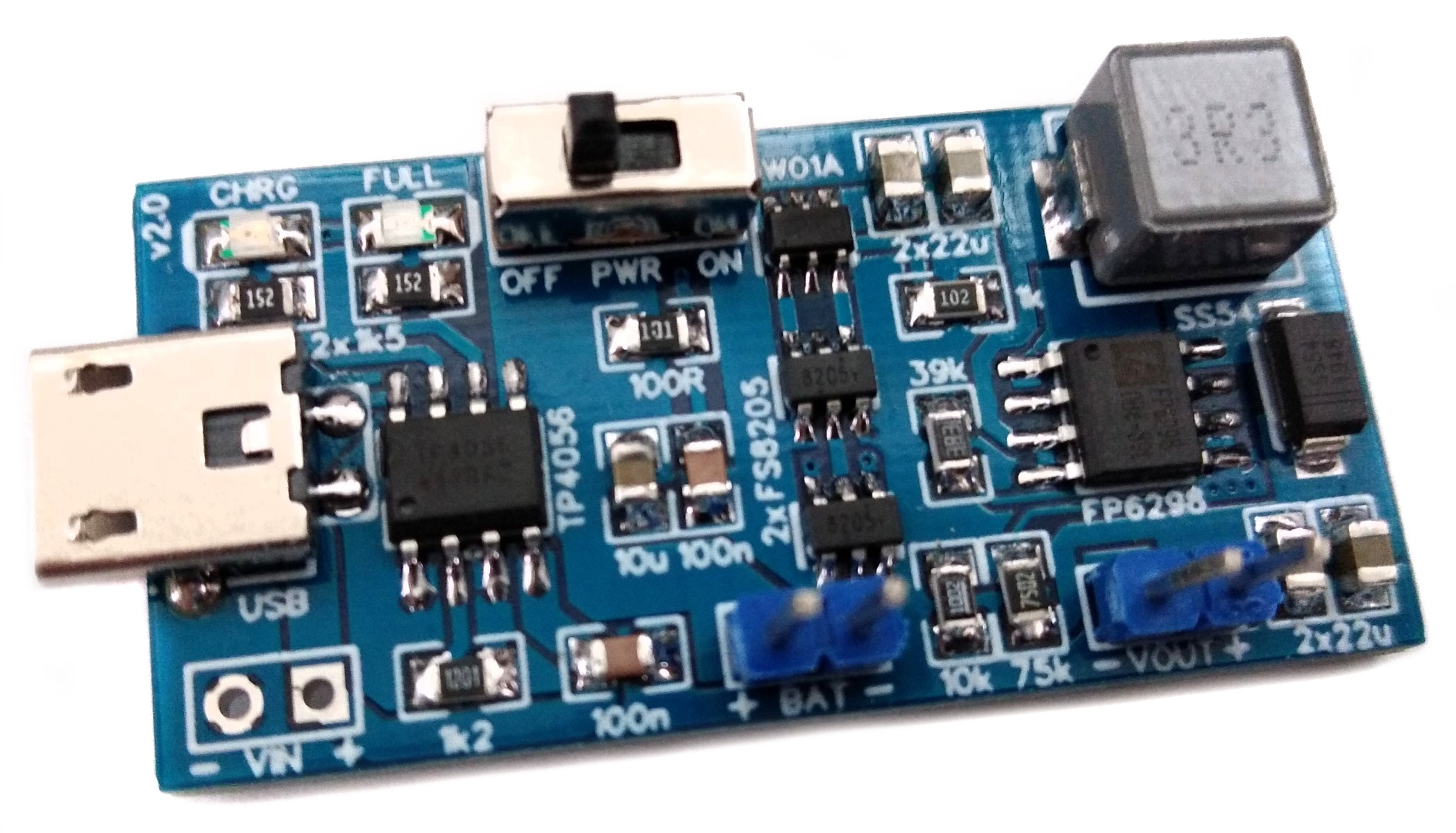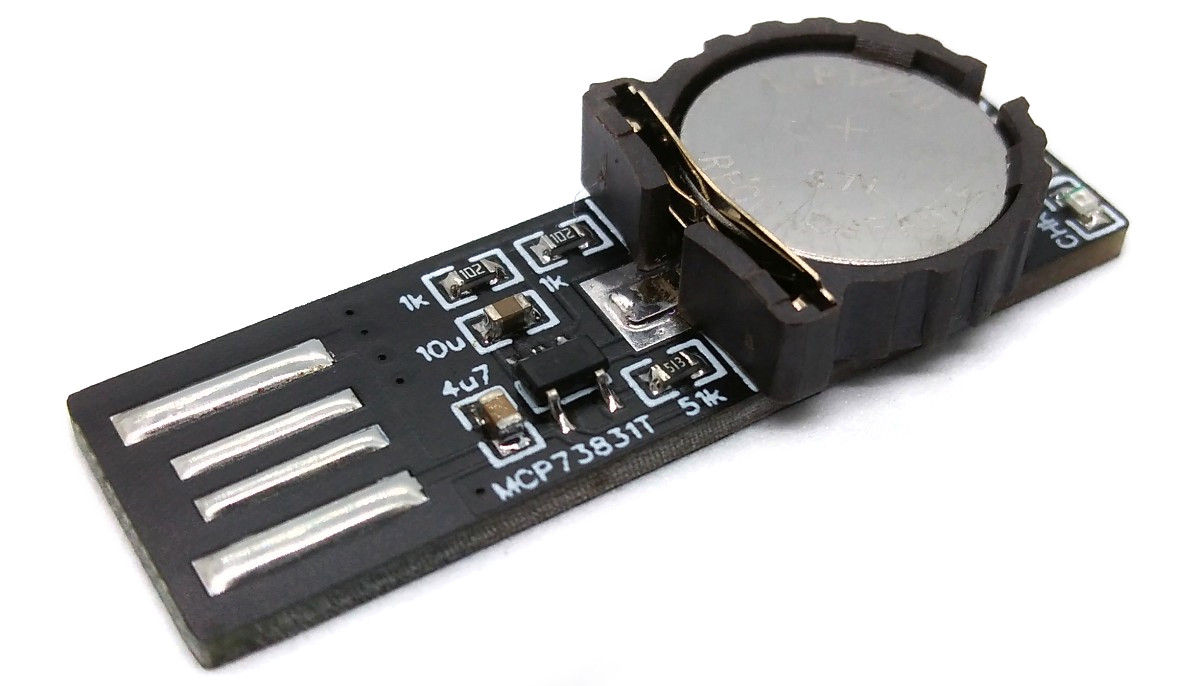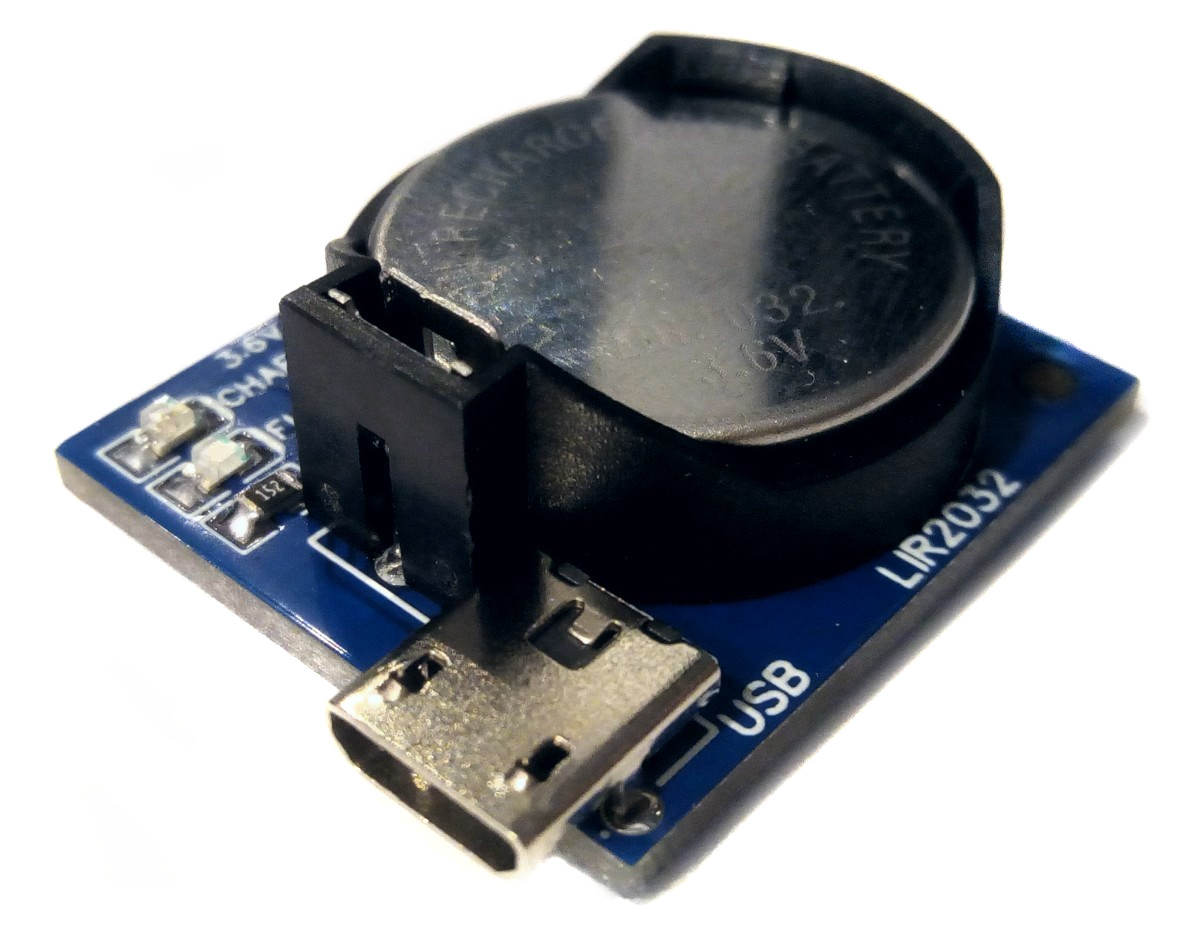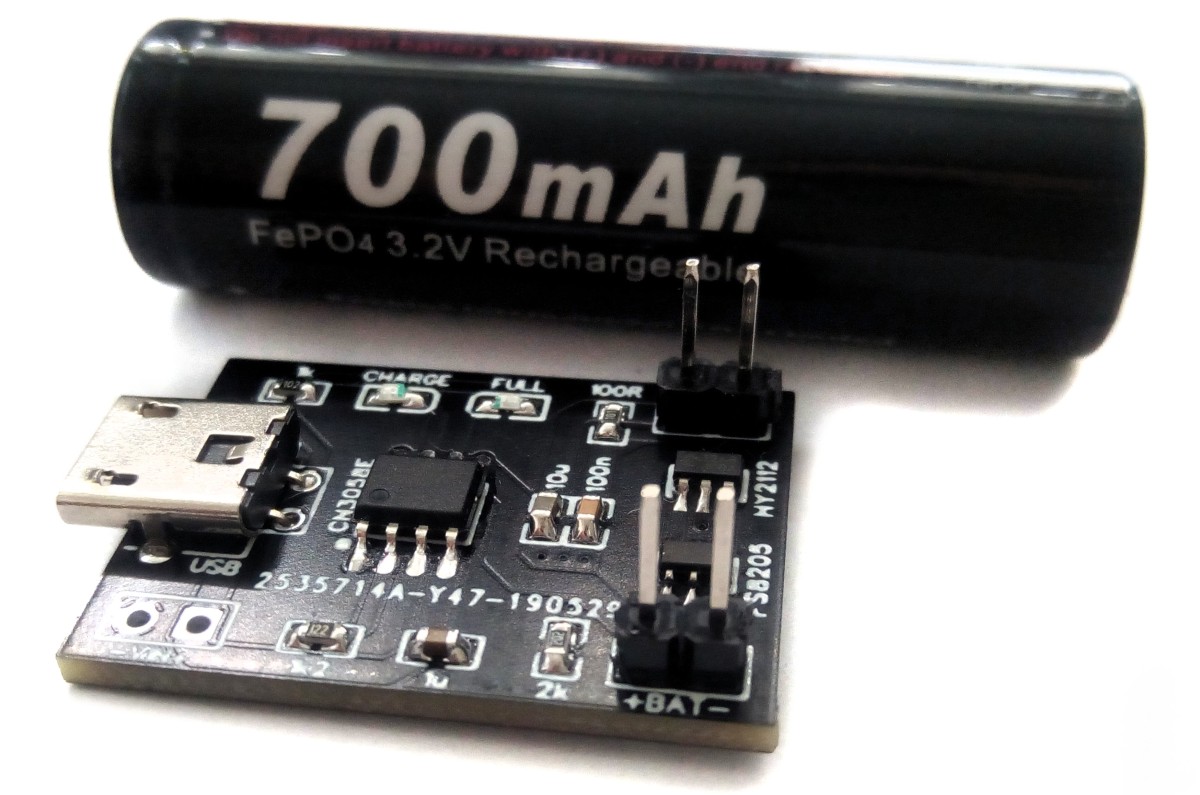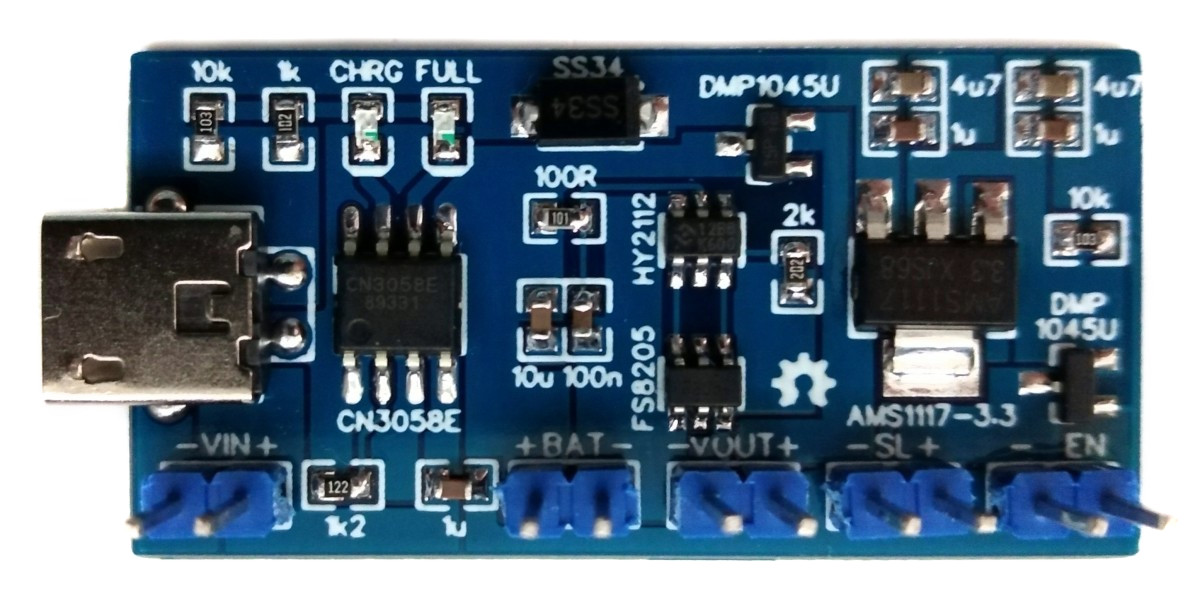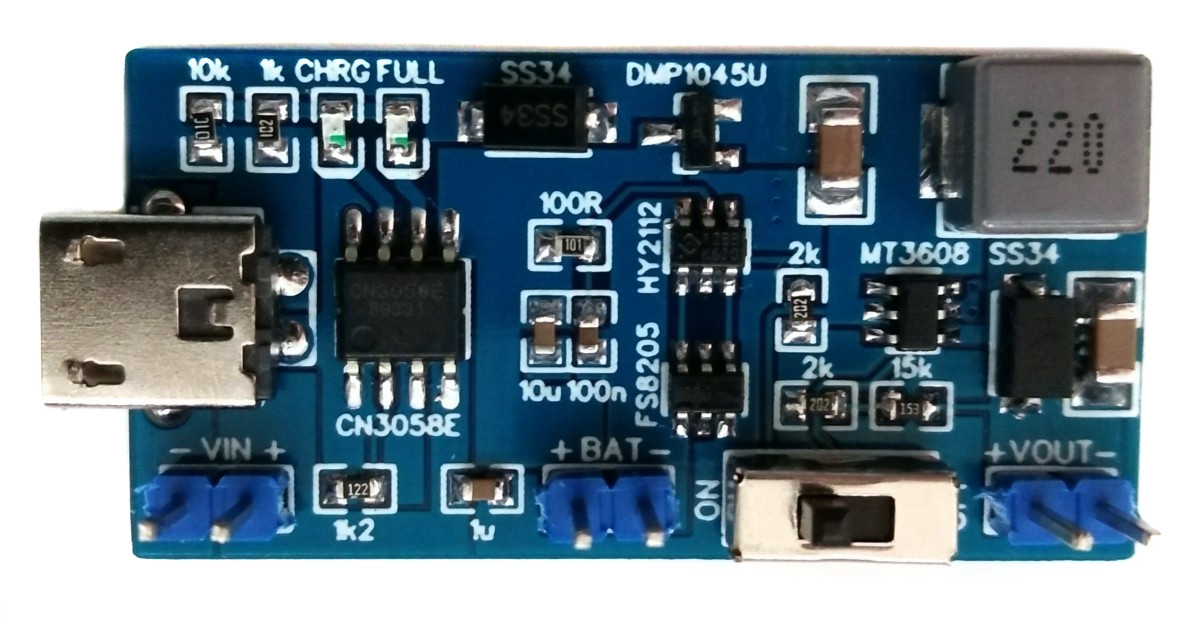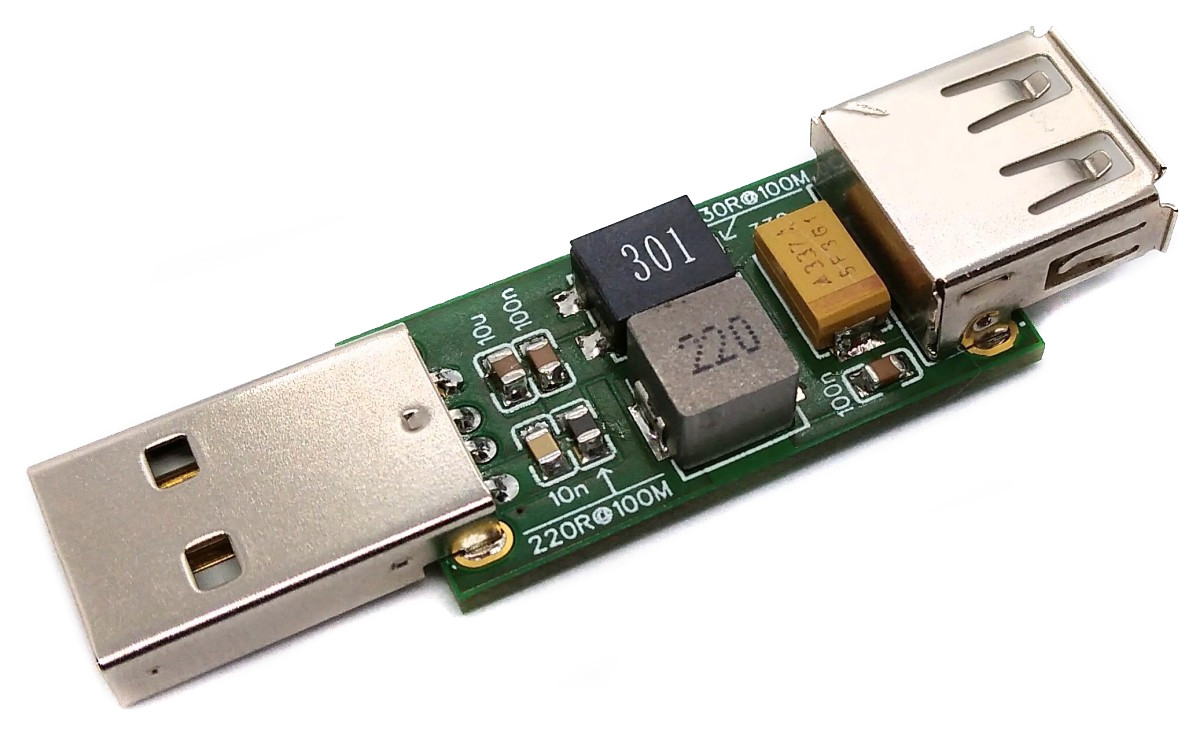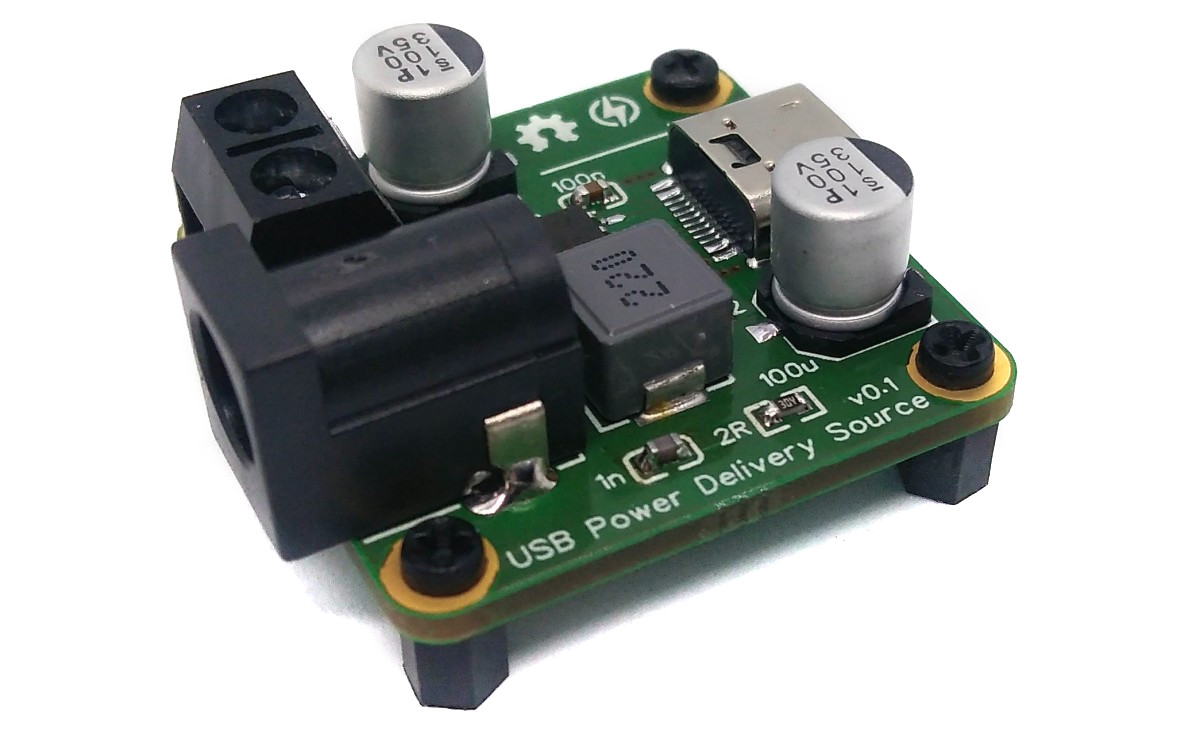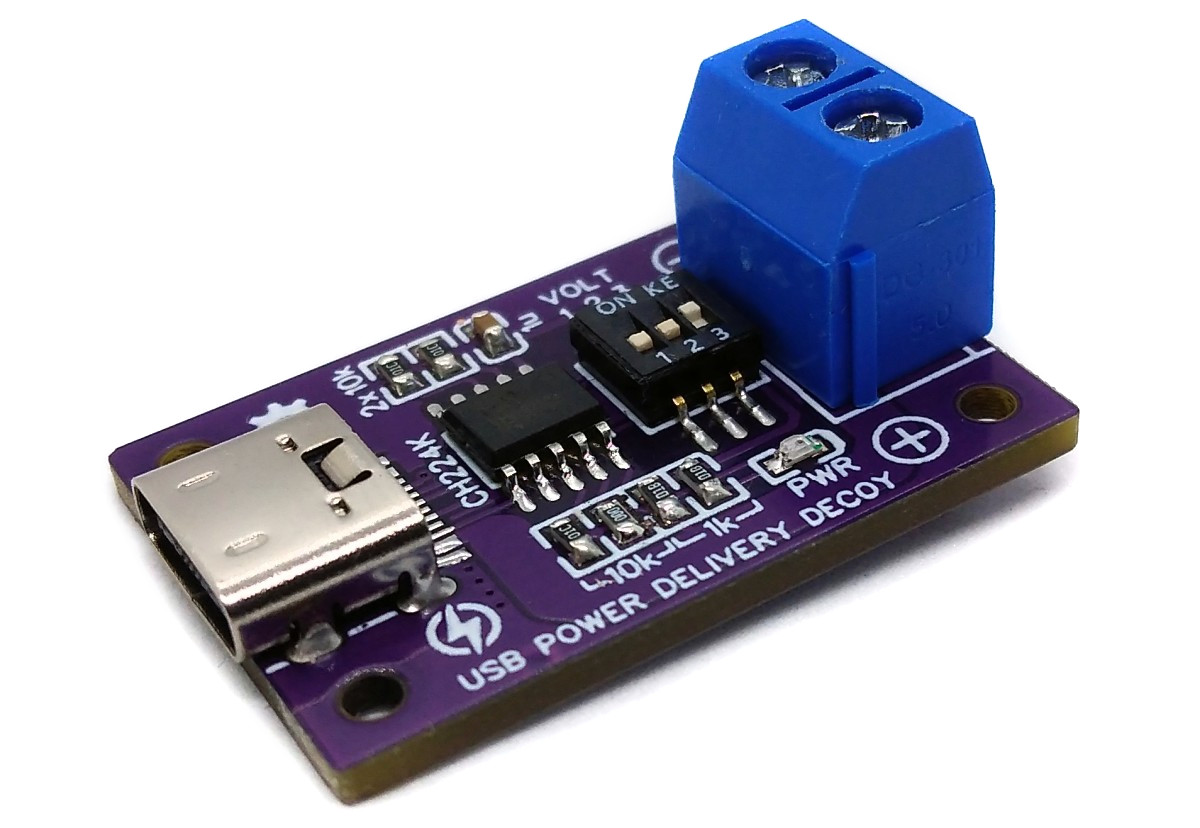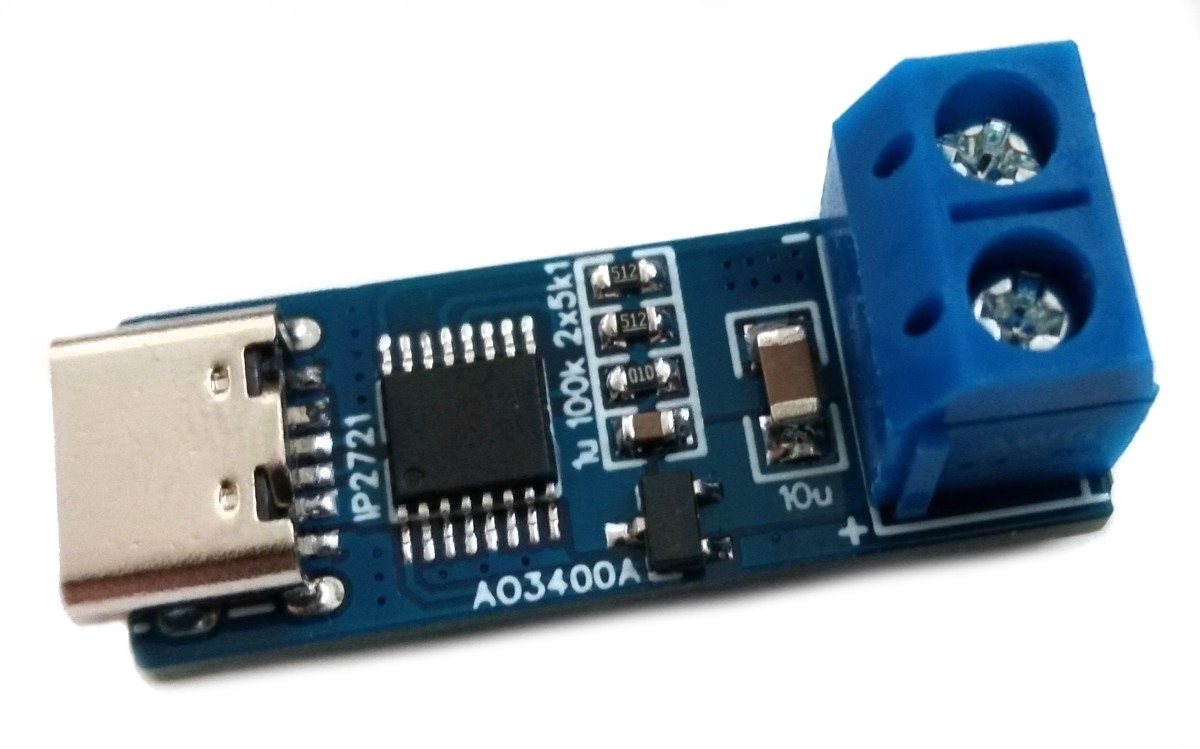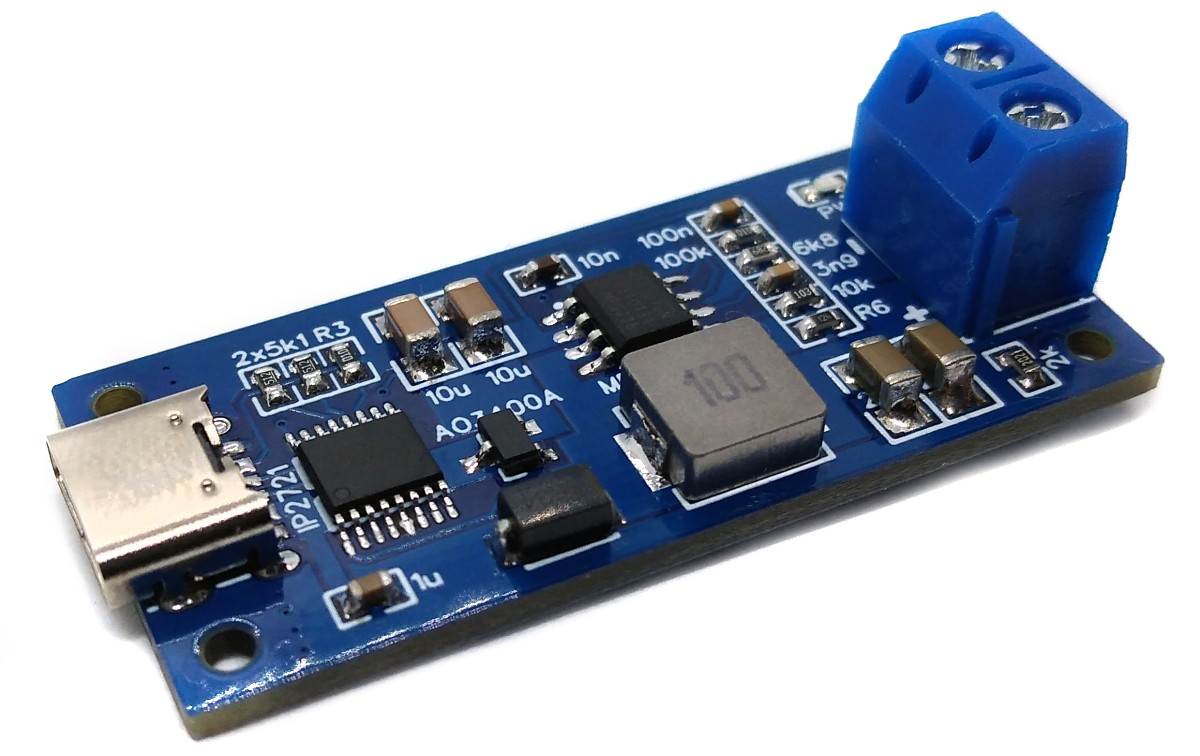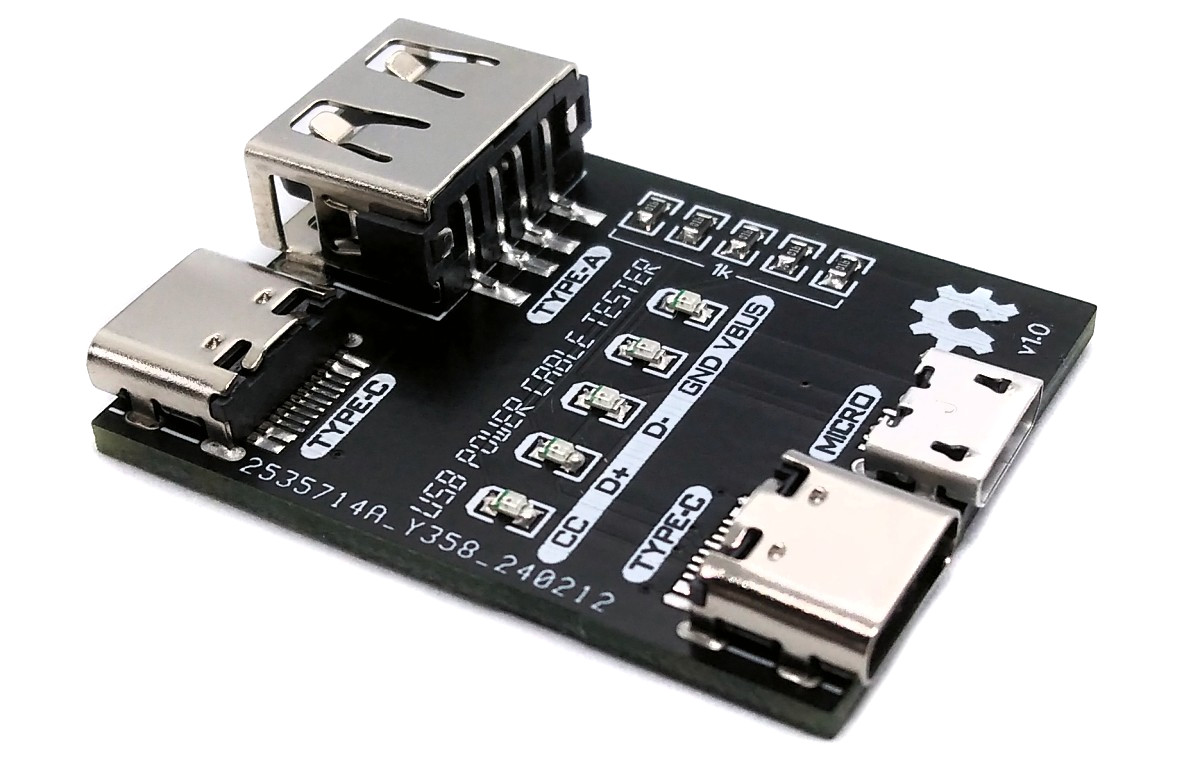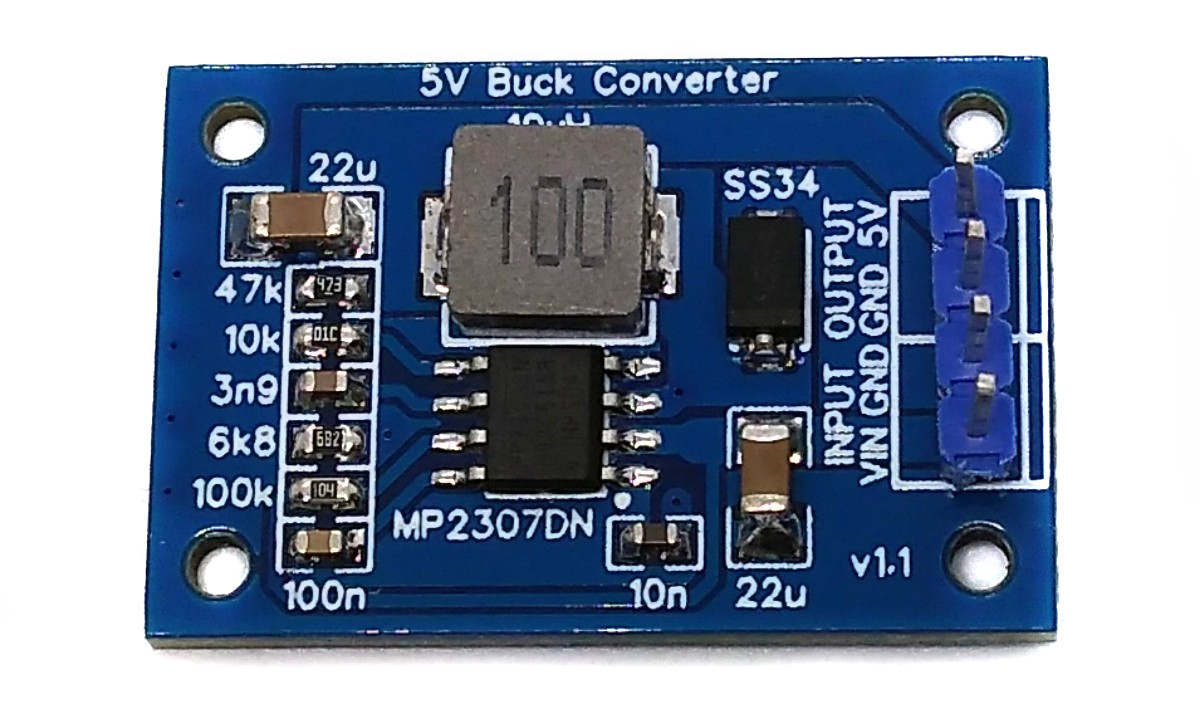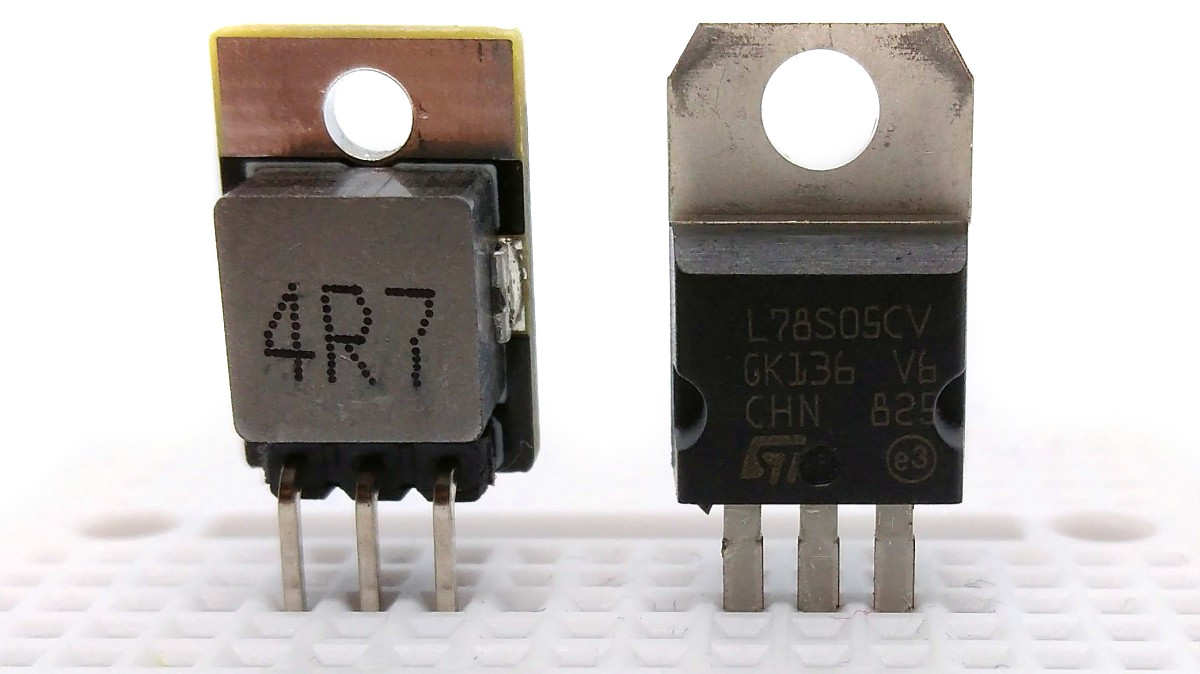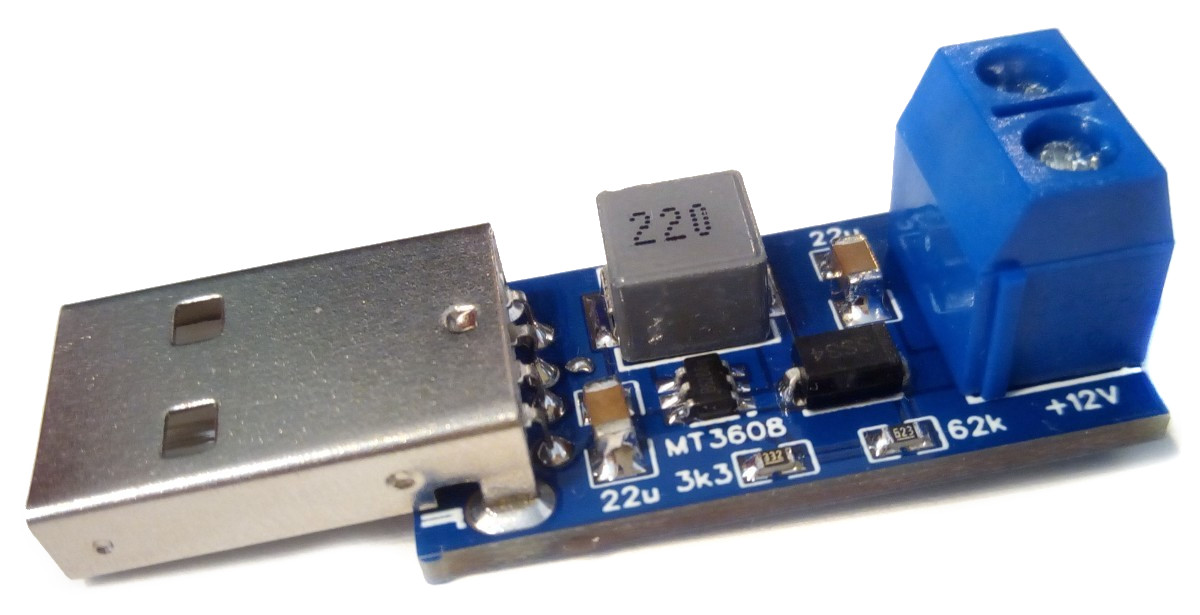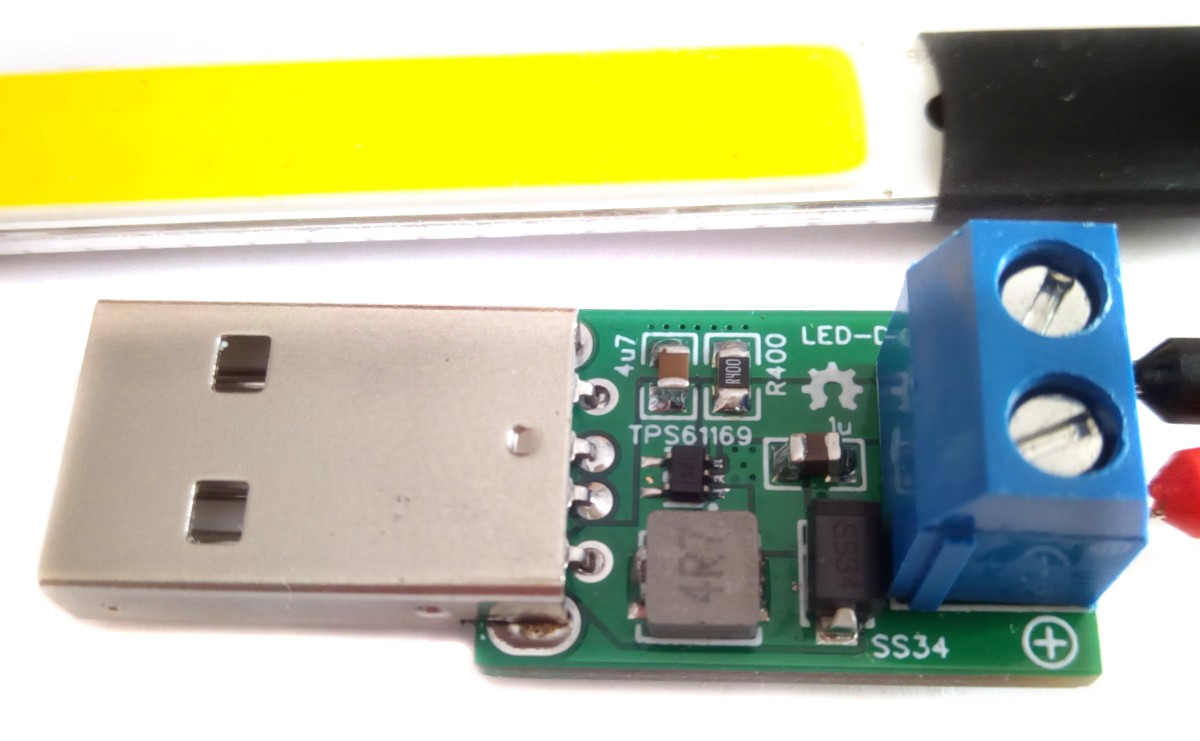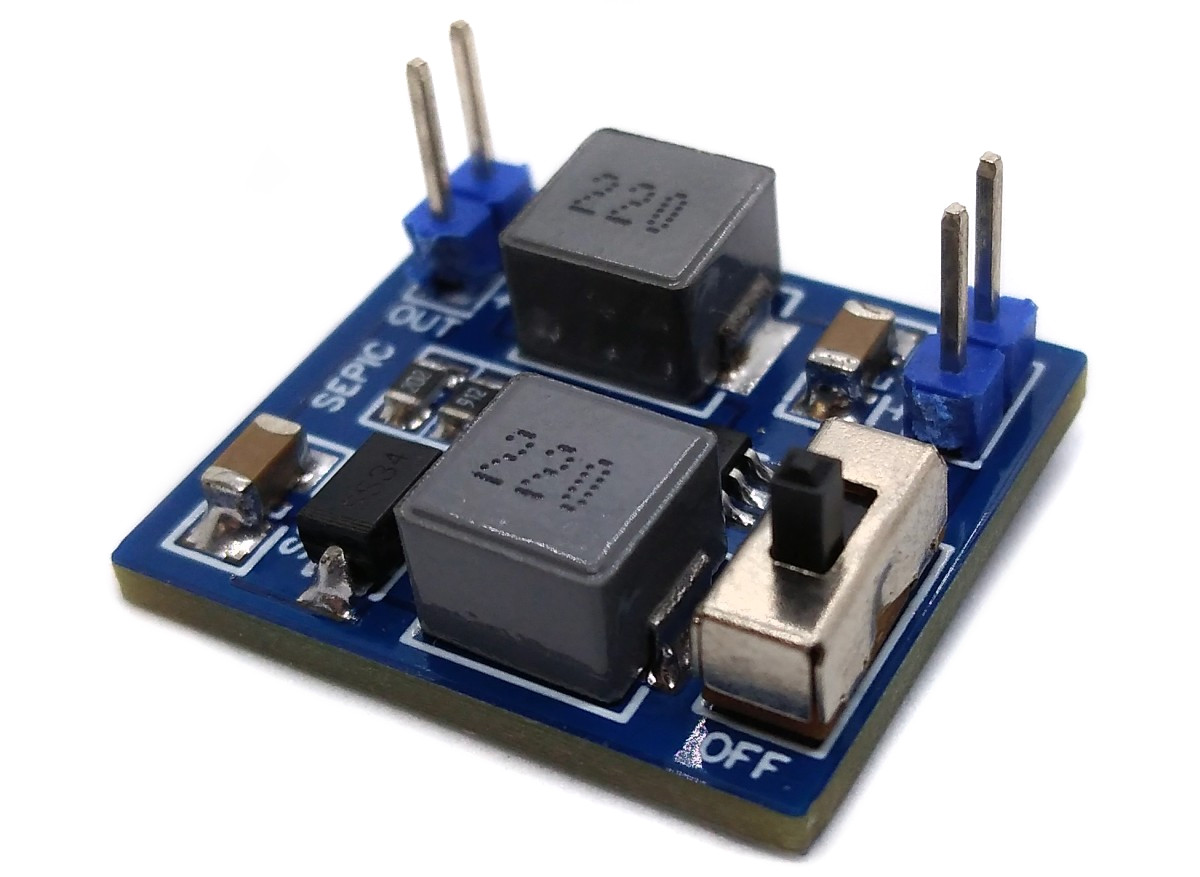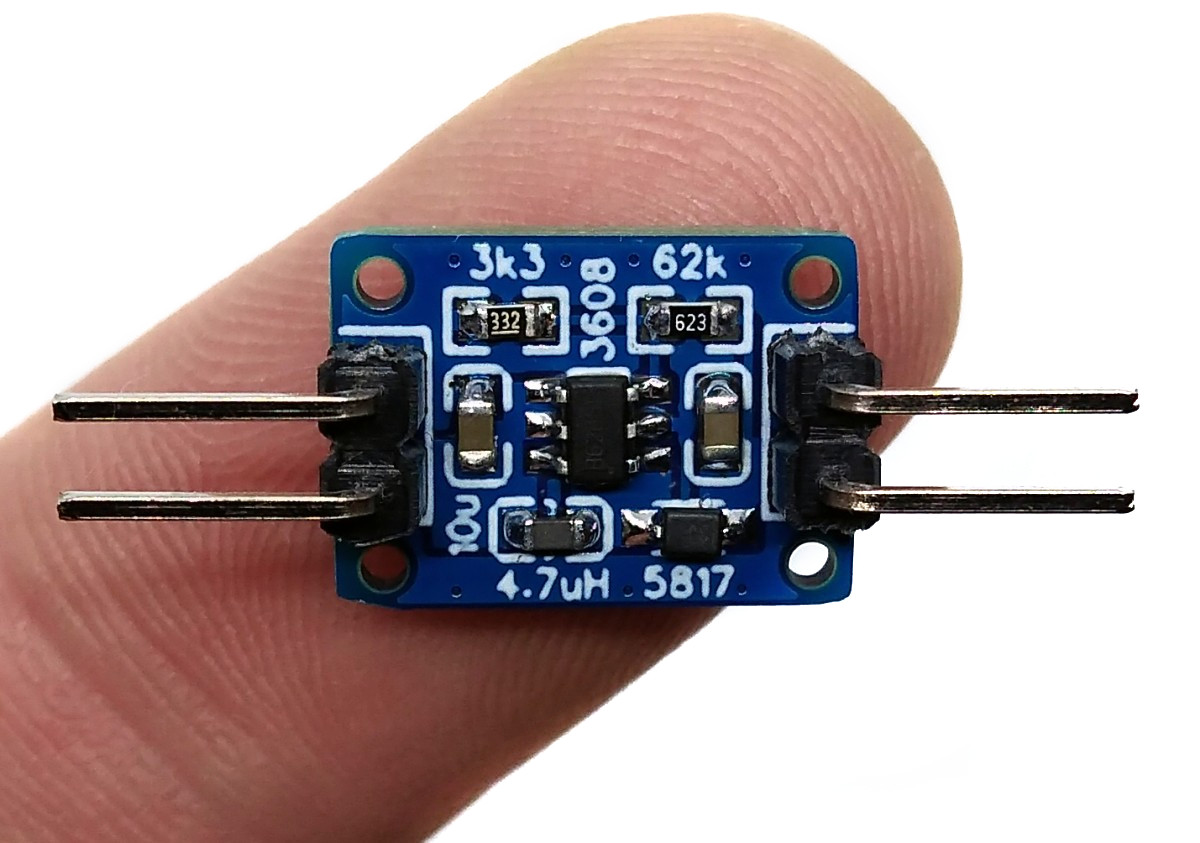Collection of DC/DC converters, battery chargers and power supplies.
Powerbank based on FP6277 boost converter with 5V and 3.3V output up to 3A.
Solar powered switch-mode charger (CN3801), protector (HY2112) and 5V booster (MT3608) for LiFePO4 batteries. The charger provides maximum power point tracking (MPPT) and can easily be modified to work with LiPo batteries.
Single cell Li-Ion/LiPo battery synchronous switch-mode fast charging board (up to 3A) with USB Type-C port.
Single cell Li-Ion/LiPo battery charging and protection circuit.
Single cell Li-Ion/LiPo battery charging and protection board with USB-C port and load sharing power path control.
Single cell Li-Ion/LiPo battery charger, protector and 5V booster based on the IP5306 with MicroUSB or USB Type-C port.
Single cell Li-Ion/LiPo battery charger (TP4056), protector (DW01A) and 5V/3A booster (FP6277).
Single cell Li-Ion/LiPo battery charger (TP4056), protector (DW01A) and 5V/2A booster (FP6298).
Charger for LIR1220 Li-Ion batteries.
Charger for LIR2032 Li-Ion batteries.
Single cell LiFePO4 battery charger and protector.
Single cell LiFePO4 charging (CN3058E) and protection (HY2112) board with load sharing power path management, 3.3V output und an additional switchable output.
Single cell LiFePO4 charger (CN3058E), protector (HY2112) and 5V booster (MT3608) board with load sharing power path management.
The USB Power Filter reduces noise and ripple on the 5V power rail through a combination of different low-pass filters.
With the USB-PD Source, old power supplies can be transformed into modern fast charging adapters with a USB Type-C output port and an output power of up to 18W. The device masters the most common fast charging protocols (PD2.0, BC1.2, QC2.0, QC3.0, FCP, AFC e.g. for Apple, Samsung, Huawei) and can offer different voltages with high currents (5V/3A, 9V/2A, 12V/1.5A).
With the USB PD Decoy, a USB Type-C PD power adapter can be used as a power supply with the option of selecting different output voltages via DIP switches. It is based on the cheap and easy-to-use CH224K multi fast charging protocol power receiving chip.
Very simple USB Type-C Power Delivery trigger board based on the IP2721 that requests the maximum voltage (up to 20V) from the power supply.
A slightly different approach to USB Type-C Power Delivery by combining a PD maximum voltage trigger (IP2721, up to 20V) and a buck converter (MP2307). The output voltage can be selected via the voltage divider (R5 + R6). The maximum output current is 3A.
A simple testing device to verify the presence and continuity of power and data lines in USB charging cables.
3A buck converter based on MP2307. Fixed output voltage can be defined via the voltage divider.
5V/4A Buck Converter based on the LM2596.
Replace your old 78xx voltage regulators with this much more efficient pin-compatible buck converter.
Boost converter with USB plug. Fixed output voltage can be defined via the voltage divider.
Constant current boost converter and LED Driver with USB Plug.
Simple SEPIC (Single Ended Primary Inductance Converter) non-inverting buck/boost converter based on the MT3608 with a fixed output voltage selectable by the resistor values of the voltage divider.
Cheap and low-profile 12V boost converter based on MT3608 for low current applications (max 30mA) like high-voltage programmers.


